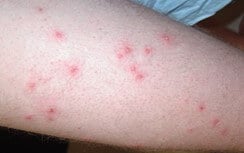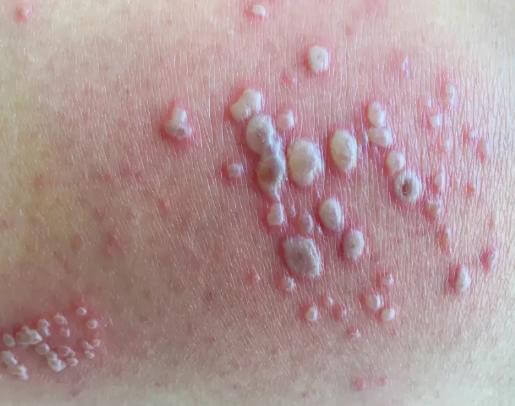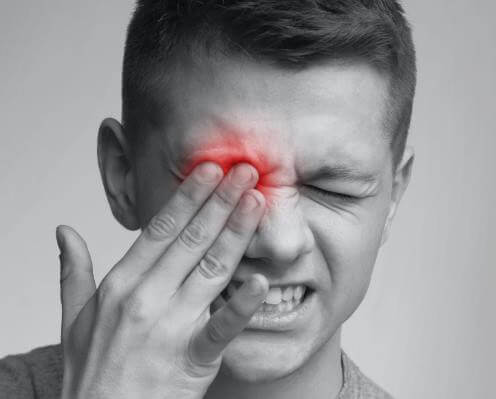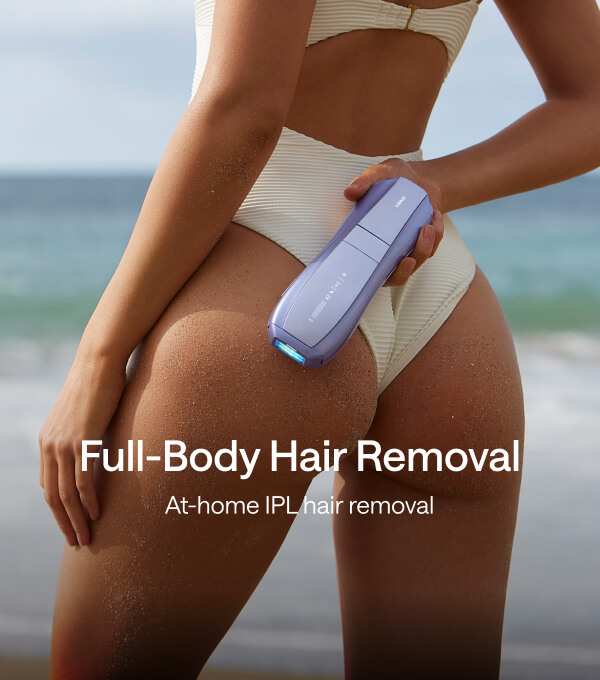Who likes to have hair on their body? Surely, no one! That is why there are so many methods developed to date for getting rid of body hair for a long time period or even long-lastingly in some cases.
Laser hair removal is one of those efficient methods that can help you get a hair-free body for months to years without having to go through any pain or everyday hassle of removing your hair. It does come with a number of benefits, but before going for it, let’s dig deeper into Laser hair removal and some side effects it can cause.
 What is Laser Hair Removal and How does it Work?
What is Laser Hair Removal and How does it Work?
Laser hair removal is a non-invasive technique to remove unwanted hair on your body and face. In this procedure, a laser is applied on the body without cutting the skin, to remove hair from desired area.
It works by selectively targeting melanin, the pigment responsible for providing color to the skin. When the laser is applied to the body, it penetrates the skin and the laser energy converts into heat. The heat reaches the hair follicles and destroys them. For the treatment to work effectively, you might need a few sessions because hair growth has a complete life cycle and you need to target the follicles in the new-growth phase.
It does not provide long-lasting results but after completing the sessions, the results are long-lasting.
Side Effects and Risks of Laser Hair Removal
Laser hair removal is safe and less painful as compared to typical laser hair removal techniques like waxing, plucking, and epilating. But is it completely safe? It has some side effects you might face occasionally.
 Are you feeling skin irritation after laser hair removal and getting worried that it might not be normal? Well, it is one of the most common after-effects of laser hair removal and the good news is it is temporary.
Are you feeling skin irritation after laser hair removal and getting worried that it might not be normal? Well, it is one of the most common after-effects of laser hair removal and the good news is it is temporary.
When the heat reaches your hair follicles and destroys them, this can cause a tingling sensation in your skin and make you feel itchy. To soothe your skin, you can apply ice for some time on the treated area.
Laser hair removal can cause pigmentary changes that can be temporary as well as long-lasting. When you get laser treatment, the upper layer of your skin is disrupted, and inflammation occurs in that area. The inflammation results in an increase in the production of melanin which can get stuck in the damaged area and cause hyperpigmentation.
Exposure to sunlight can also worsen the condition. Laser hair removal can also lighten the affected area.
 As the heat from the laser device comes in contact with your skin, it can result in the formation of small red bumps on that area. Just like how your skin gets red when your hand gets burned while cooking.
As the heat from the laser device comes in contact with your skin, it can result in the formation of small red bumps on that area. Just like how your skin gets red when your hand gets burned while cooking.
Moreover, the damaged hair follicles can lead to histamine reactions in the body resulting in inflammation along with redness. The inflammation is normal and indicates that the heat is sufficiently absorbed by the hair follicles.
Laser hair removal can cause scarring. Although it happens rarely, it can occur most commonly due to a mistake on the practitioner’s end. Furthermore, it is more common in those people with sensitive skin or those who do not take care of their skin well after laser hair removal.
To know how can you prepare your skin for effective hair removal you can check out the Summer Skincare: Hair Removal & Sun Protection.
 The formation of blisters by laser hair removal is the same as that of a burn caused by touching a hot pan. When heats come in contact with the skin, and destroy the hair follicles in addition to the upper layer of skin, a fluid is trapped in a space.
The formation of blisters by laser hair removal is the same as that of a burn caused by touching a hot pan. When heats come in contact with the skin, and destroy the hair follicles in addition to the upper layer of skin, a fluid is trapped in a space.
This fluid accumulation results in blister formation. It is also a rare side effect that might only occur in case of severe burns during hair removal treatment. So, Don’t worry as long as you have a skilled practitioner by your side.
The Upper layer of our skin acts as a protective barrier against the rays of the sun, any microbes, and foreign bodies. Now, what happens when the first line of defense is broken? Of course, it will be easier for bacteria and other microorganisms to enter the body and cause infections. So, it is important to take care of your skin well during the healing phase to eliminate all the risks.
Furthermore, if the hair removal device is not properly cleaned, you are at an increased risk of infection.
 You must have seen hair removal practitioners wearing protective shields while performing the procedure. It is because the lasers used for the skin are not for the eyes. So, direct contact with the laser used for your hair removal can damage the eyes and disrupts their structures leading to corneal scarring, inflammation of the eyes, etc.
You must have seen hair removal practitioners wearing protective shields while performing the procedure. It is because the lasers used for the skin are not for the eyes. So, direct contact with the laser used for your hair removal can damage the eyes and disrupts their structures leading to corneal scarring, inflammation of the eyes, etc.
A long term exposure can even cause cataracts.
Lasers are supposed to decrease your hair growth but sometimes they can cause an increase in hair growth. This condition is called Paradoxical hypertrichosis causing the growth of thicker and darker hair near the treated area.
It is common in those with dark skin or syndromes like Polycystic Ovarian Syndrome. The chances of excessive hair growth are very less. Those with PCOS can check the Best Method of hair removal for women with PCOS to have silky smooth skin with no worries.
Is it true or Is It a Myth?
There are some side effects lasers actually have and some are just myths created by the people without any proper research. Did you also hear those myths and now looking for an answer? Your answers are right here!
Laser Hair Removal can Lead to Cancer
The most common myth associated with laser hair removal is that it causes cancer. Lasers only target the hair follicles and destroy them. Moreover, they are free of UV radiation and their energy level is low so your genetic material cannot be easily affected by them.
Additionally, the association of laser with cancer is not scientifically proven yet.
Laser Hair Removal is Not Safe for Pregnancy
 Excessive hair growth during the time period of pregnancy is something most of us face and hate as well. You might want to get rid of the hair as soon as possible but there is no proof that it is safe.
Excessive hair growth during the time period of pregnancy is something most of us face and hate as well. You might want to get rid of the hair as soon as possible but there is no proof that it is safe.
Additionally, the excessively grown hair falls off on its own with time so you don’t need to get anxious about it at all.
Laser Hair Removal can Infertility
The Laser penetrates the skin, but not deep enough to reach any organs of your body and affect their functioning. Just like how the association of cancer with lasers is not proven yet, there is no solid basis for laser-causing infertility.
3 Safe Hair Removal Methods
Laser hair removal might work for some people while don’t for others. So, there are some methods you can try for safely removing unwanted body hair. Some of these methods can get you long-lasting results as well.
IPL Hair Removal
IPL hair removal is one of the least painful and safe methods for removing unwanted hair. It also provides long-lasting results. It uses impulse pulsating light to target the melanin and destroy the hair follicles.
A safe IPL device you can use at home is the Ulike Sapphire Air 10 IPL Handset which provides you results in just 1-2 weeks. It is easy to hold and its ice-cooling technology can minimize the tingling sensation for you.

Electrolysis
If you are looking for long-lasting hair removal, then you can go for Electrolysis. In this technique, the hair follicles are destroyed using an electric current. This current flows through a thin needle into the skin and damages the follicles.
It is going to cause a little discomfort, but it is safe, and a little discomfort as compared to the long-lasting results you will get sound okay, right?
Waxing
Waxing is another safe method for hair removal we are all familiar with. This method removes hair from your follicles thus lasting longer than shaving. Moreover, the new hair will be thinner as compared to the previous one.
So, if you are afraid of all those lasers or electric current devices, just go for waxing.
Conclusion
Laser hair removal is a safe and easy technique that helps you get a smooth body for a long time. But, all this does not come for free. As the laser penetrates your skin, the heat energy can lead to skin irritation, redness, inflammation, pigmentary changes, and in the worst-case scenario scarring, blister formation, as well as eye injury.
There is a minimum risk of all these side effects if performed by a skilled person and as long as you do not have any sunburns, very dark skin, or a baby in your womb.

 By ULIKEBEAUTY
By ULIKEBEAUTY
 May 29, 2023
May 29, 2023
 7 minutes
7 minutes











